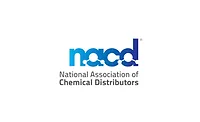The NACD Weighs in on LCSA


Allison Tuszynski, Manager, Regulatory Affairs at NACD
On June 22, 2016, the Frank R. Lautenberg Chemical Safety for the 21st Century Act (LCSA) was signed into law. Today, the EPA is regulating more new chemicals than ever before while also working to create a new regulatory structure as the law is implemented. The National Association of Chemical Distributors (NACD) is a strong advocate for LCSA and continues to be involved as the regulatory process unfolds. PCI recently discussed LCSA with Allison Tuszynski, Manager, Regulatory Affairs at NACD, who has been closely following this process that will have a huge impact on the chemical industry.
PCI: What is the Frank R. Lautenberg Chemical Safety for the 21st Century Act (LCSA)?
Tuszynski: LCSA is a law that modifies and improves the Toxic Substances Control Act (TSCA) of 1976. TSCA laid important groundwork for the management of new and existing chemicals in the United States but as time passed, it became evident that the 40-year-old law was not meeting the needs of the chemical industry today.
PCI: Why is the NACD a strong advocate for LCSA?
Tuszynski: NACD was involved with the development of LCSA from the very beginning. As chemical distributors, our member companies provide chemicals for a wide variety of market sectors including food, medical, cosmetic and industrial products. It is in the interest of NACD and its members to be strong advocates for clear, safe and effective chemical laws and regulations in the U.S. at the national level. NACD is assisting our members in understanding and complying with LCSA through webinars, white papers and other resources.
PCI: What changes have you noticed in the year since the law was enacted?
Tuszynski: Since the passage of LCSA, EPA has been making greater efforts to respond to and interact with the regulated community. The election in November and change in administration also brought in new personnel and political management of the agency. EPA has begun directly addressing industry concerns such as making an effort to address the backlog of new chemical submissions and taking many industry recommendations into consideration when finalizing the framework rules.
PCI: How are these changes impacting chemical distributors’ day-to-day operations?
Tuszynski: At this point, chemical distributors are reviewing the rules and preparing for the chemical inventory notification deadline. The largest responsibility for distributors will be complying with the notification of the TSCA Inventory, a list of all chemicals EPA deems active in commerce. Any chemicals handled within the 10-year period from June 21, 2006 and June 21, 2016 must be reported to EPA via the Central Data Exchange (CDX) System. Given the enormity of this task, EPA made several significant exceptions to the final rule. Chemicals reported under the Chemical Data Reporting rule in 2012 and 2016 do not need to be reported again. EPA is also allowing applicable parties to forego reporting on a chemical if they can obtain a CDX receipt showing that a manufacturer or other party has already reported that chemical.
PCI: What is the current status of implementation of the Act?
Tuszynski: The three “framework” final rules on the notification of the TSCA inventory of chemicals, prioritization of chemicals and risk evaluation of chemicals have been finalized. The fees rule, which will explain how EPA expects to collect fees for certain services, is expected to be proposed this year and finalized next year.
PCI: When do you expect that LCSA will be fully implemented?
Tuszynski: There are several statutory deadlines that EPA must meet according to LCSA. The three framework rules of LCSA, which provide the general structure of the regulations, must be completed this year. LCSA contains various sundry requirements of EPA, such as modifying the definition of “small manufacturer” and changing the process to substantiate confidential business information claims. EPA also has many ongoing requirements from LCSA including publishing a report to send to Congress every five years and releasing a plan for their chemical risk evaluations each year.
PCI: Any last words about LCSA?
Tuszynski: For each chemical that EPA evaluates, the agency will release a draft and a final scope. The draft scope contains information on what activities with a chemical (EPA uses the term “conditions of use”) will be covered by the risk evaluations. EPA may elect to evaluate any combination of industrial, commercial or consumer uses for a chemical. These conditions of use can range from being used within consumer watercolor and acrylic paints, solvents for industrial cleaning, to agricultural products. Anyone who uses the chemicals that EPA evaluates should review these scoping documents to verify how EPA plans to evaluate them and send comments to EPA with any concerns.
Looking for a reprint of this article?
From high-res PDFs to custom plaques, order your copy today!






